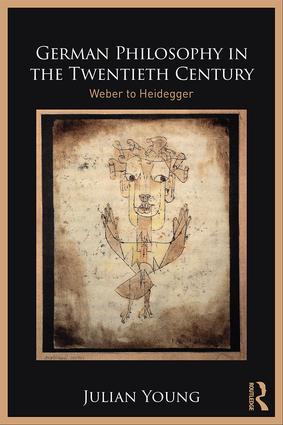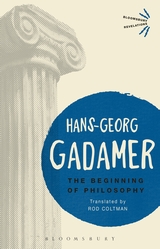 Self-Understanding and Lifeworld: Basic Traits of a Phenomenological Hermeneutics
Self-Understanding and Lifeworld: Basic Traits of a Phenomenological Hermeneutics
Studies in Continental Thought
Indiana University Press
2017
Hardcover $65.00
430
Reviewed by: Douglas Giles (University of Essex)
Gander’s declared aim in Self Understanding and Lifeworld is to build on the untapped potential of Heidegger’s hermeneutical phenomenology of the lifeworld and the self-forming experience of reality. The book is a long and closely argued exploration of how a human being develops an understanding of oneself as a self within a social lifeworld.
Gander spends perhaps a little too much time beating the dead horse of the Cartesian self but he does correctly emphasize the importance of the self not as a self-certainty but as a fluctuating play of unfolding human experiences in the historical world. The historicity of the individual is important to Gander, who focuses on the self-understanding as a to-and-fro between present experiences and progressive-anticipatory self-confirmation. To the contrary, Gaander says, the human self is historicized, meaning that the self cannot be identified as an ahistorical transcendent ago, but needs to be conceived as a historical self in the current of history. As human individuals, our task is to have to incessantly identify our self from within our self within the lifeworld.
Gander’s primary task in Self Understanding and Lifeworld is to set forth a phenomenology of the human self that describes what it means to be a unified human self in the current of life history. In response to the philosophical need to critically discuss self-understanding within the lifeworld, Gander argues that the Husserlian conception of the phenomenology of consciousness is inadequate for answering the problem of history in the hermeneutics of the self-understanding of human beings in the world. Each of us, Gander says, is what we are only through what we have become, and thus, the hermeneutical question of the self-understanding takes shape in Heidegger’s project of a hermeneutics of facticity.
In Part One, Gander interprets the human being’s facticity as similar to the writing and reading of a text. Gander’s analogy is to compare self-understanding with understanding a text. Our knowing is an interpretation, including our knowing of ourselves, allowing us, Gander argues, to compare the understanding of our self with the understanding of a text. The move Gander makes here is one with which the reader may or may not agree, and the reader may or may not find Gander’s defence of it—a blending of Dilthey, Foucault, and Gadamer—convincing. In short, if I understand Gander correctly, his argument is that in a text, there is a space in which the writing subject disappears and since a human being’s self understanding is a historical consciousness—a kind of text being written and read—we as a knowing subject of our self-understanding disappears. The textual analogy rests largely on seeing the historicity of the individual as a kind of reading of the individual’s cultural traditions. We enter into the text (the “book of the world”) of our tradition and in reading and interpreting that text, our individual self-persuasion forms itself. Gander says that “the human self- and world understanding underlies and forms itself from out of the force field of the particular historical-cultural tradition.” (55) That individuals develop their understandings of self and world from their cultural tradition is uncontroversial, but whether we gain philosophical understanding of this process by applying the textual analogy is open to question. Gander’s argument is certainly plausible, but it is not clear that it is an advance on other philosophical approaches.
Regardless of how we view the self-formation of the human self, we are left with the problem of the lifeworld. This is a philosophical problem because the constitution of the self and the possibility of self-experience are connected to the self’s history in the world. Gander turns to the problem of the lifeworld in Part Two. The field of reality, Gander says, opens itself to the philosopher in the language the philosopher speaks and the meaning of its concepts which are set out in historical context. The approach needed, therefore, is a hermeneutical interpretation of concepts that is related to human situatedness in everyday experience. (79-81) Gander then enters a lengthy exposition against Descartes’s philosophical method and the self-certainty of the self within Descartes’s method, little of which will be new to the reader.
When Gander returns to the problem of the lifeworld, he observes that life and thus the lifeworld can no longer be considered something over and against the subject as in Descartes. (116) He then turns to Husserl’s discussion of the lifeworld, interpreting Husserl’s task as a project of “lifeworldly ontology.” (140) Gander adopts Husserl’s task, but also finds Husserl’s approach wanting. The individual’s facticity in the world is carried out in the historical and cultural horizons of the lifeworld. The “concrete lifeworld” is a variable, changing historical-social-cultural world and the lifeworld is more than a mere preliminary to the transcendental sphere of reason. For this reason, Gander says we must take leave of Husserl’s narrow approach to a theory of perception and begin anew the task of an ontology of the lifeworld as outside the transcendental horizon. Gander criticizes Husserl as bypassing the factically concrete lifeworld in its historicity in favor of what Gander calls “an intended final sense by means of the transcendental epoché…[and] takes the sting out of his diagnosis.” (163) By claiming the singularity of the lifeworld, Husserl, Gander says, cuts himself off from existentiell factical contingent experience and the plurality of lifeworlds. At no point does there arise a central perspective from which the human relation to self and world, therefore, Gander rejects Husserl’s approach, adopting in opposition the approach that “the ground of the natural lifeworld, with the experiences of contingency encountered everywhere and at each moment, remains a significant, indeed a necessary corrective against intellectual flights of thinking.” (167)
Gander expands on his claim that Husserl has neglected the historical and factical life in Part Three. And it is here that he gets to the main point of his book:
I experience myself only in the midst of the world—and that means in the midst of time and history—so this relatedness always already implicates the self-constituting experience of difference in its ontological presupposition. The self-relation generates and determines itself accordingly through and as difference, yet does not spilt in the Cartesian sense, but rather in that I experience myself qua difference as essentially open to the world; the self always already transcends itself beyond me to the understanding possible for me as historical horizon. (184)
Our finite self-relation is constituted by both transcendence and difference, Gander argues, and though our phenomenological approach to the problem of the lifeworld benefits from Husserl’s epoché, it also benefits from the early Heidegger’s critique of Husserl—specifically the former’s view to the structure of care. Gander sides with Heidegger in rejecting Husserl’s empty certainty and in accepting instead the understanding that science should be posited as knowing comportments of human beings. Human knowing is a specific mode of being in the world and taking this into account allows our phenomenological approach to include the unexpressed effective background beliefs that form humans’ presuppositional horizon. The proper things of philosophy, Gander concludes, following Heidegger, are not experiences of consciousness taken through the transcendental and eidetic reduction but the phenomena of the human ontological condition of the care for life. Heidegger grasps facticity, Gander says, as the existentiell situation of the individual—one’s own concrete, particular context of life. (196) Self-understanding is therefore experienced in one’s particular facticity within an historical horizon constituted by both transcendence and difference regarding one’s orientation to oneself and to the world.
Having argued for the preference of Heidegger over Husserl, Gander turns back to the issue of a hermeneutics of the self-understanding of human beings in the world. He begins by approaching the pretheoretical life. The human is enmeshed in factical life in such a way that the self as activity constitutes itself in the lifeworld. What we call “life” is known through and in a hermeneutically interpreting active knowing of the having of life itself. (212) Life in itself is always my own life and what it means to be a self is to experience the self-world that is there for us in every situation. Our phenomenological approach must look at the factical experience of life that is always lived out in a lifeworld which is centered in the self-world of comportment to oneself. (214) Gander’s hermeneutical ontology of facticity considers the world-relation as self-relation and constructs an historical ontology of our ourselves based on the conception that experience fundamentally refers to self-relation that is always already situationally related or bound. We make experiences only in situational connections, and situations create in themselves possibilities of experience for me.
Self Understanding and Lifeworld is perhaps longer of a book than it needs to be. One could also argue that it covers well-worn paths of material. As a contribution to Heideggerian studies, Gander’s book has value in how he relates several concepts in Heidegger to other twentieth century philosophers. Any writings concerning this subject matter are, almost by necessity, opaque and complex, and Self Understanding and Lifeworld is definitely those things. Gander’s differentiation of everyday experience as an historical life is a difficult read but worthwhile for the reader who is interested in new applications of Heidegger for the study of the self.








